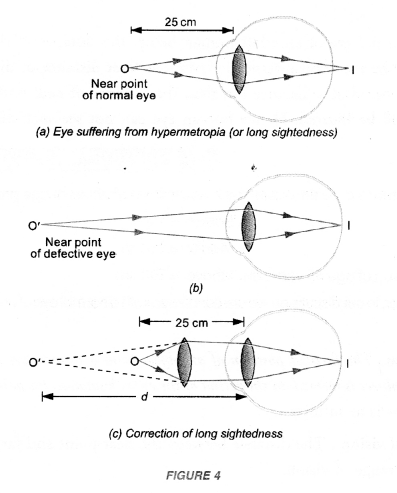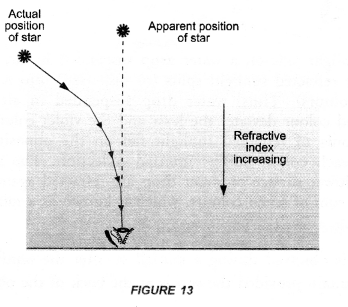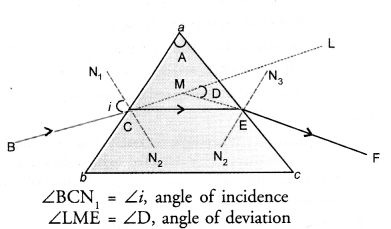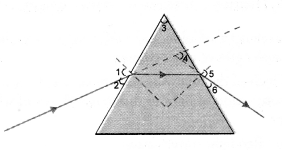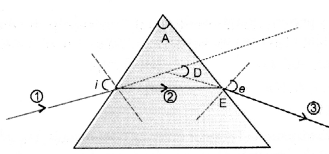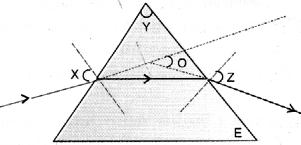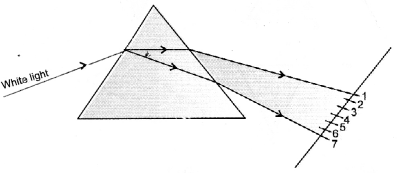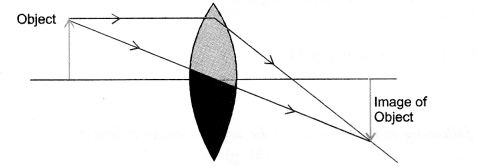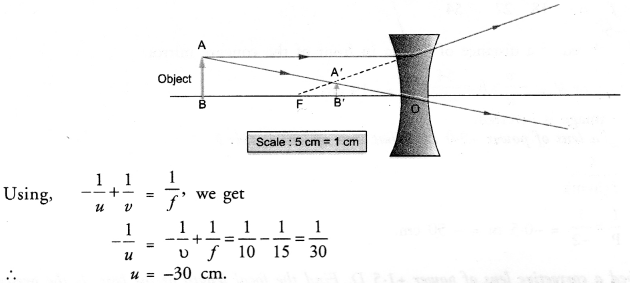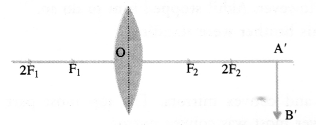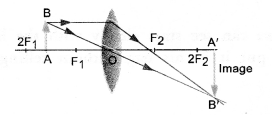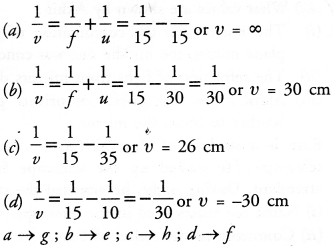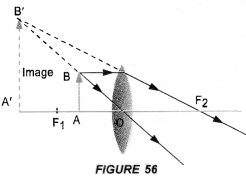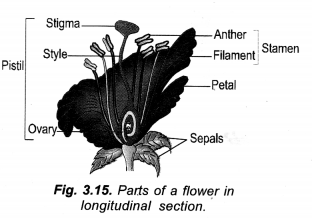NCERT Solutions for Class 10 Science Chapter 9 Heredity and Evolution
These Solutions are part of NCERT Solutions for Class 10 Science. Here we have given NCERT Solutions for Class 10 Science Chapter 9 Heredity and Evolution. Learn Insta provides you the Free PDF download of NCERT Solutions for Class 10 Science (Biology) Chapter 9 – Heredity and Evolution solved by Expert Teachers as per NCERT (CBSE) Book guidelines. All Chapter 9 – Heredity and Evolution Exercise Questions with Solutions to help you to revise complete Syllabus and Score More marks.
NCERT Questions
In Text Questions
Question 1.
If a trait A exists in 10% of a population of an asexually reproducing species and a trait B exists in 60% of the same species, which trait is likely to have arisen earlier ?
Answer:
In asexually reproducing population, there is no reshuffling of traits. New traits do develop due to small inaccuracies produced during DNA copying. They will be in smaller proportion than the traits already present. Therefore, trait B which exists in 60% of population must have arisen earlier than the trait A which occurs in 10% of the population.
More Resources
Question 2.
How does creation of variations in a species promote survival ?
Answer:
A number of different types of variations develop in a population. All of them do not have survival value. However, some of them are pre-adaptations which can be beneficial under certain environmental conditions. For example, in a heat wave most of the bacteria will die but a few having pre-adaptation or variation to tolerate heat wave will survive and multiply. Actually selection of variants by different environmental factors constitutes the basis for evolution.
Question 3.
How do Mendel’s experiments show that traits may he dominant or recessive ?
(CCE 2012, CBSE Delhi 2016, 2017)
Answer:
Mendel crossed Garden Pea plants having contrasting visible traits, e.g., tall and dwarf, violet and white flowered.
In F1 generation there were no halfway characteristics. A cross between pure tall and pure dwarf plants yielded only tall plants in F1 generation. There were no medium height plants. When F1 plants were self bred, the F2 plants were not all tall plants. Instead, both tall and dwarf plants appeared in ratio of 3 : 1. It means that the trait for dwarfness was present in F1 generation but was not expressed while the trait for tallness expressed itself.
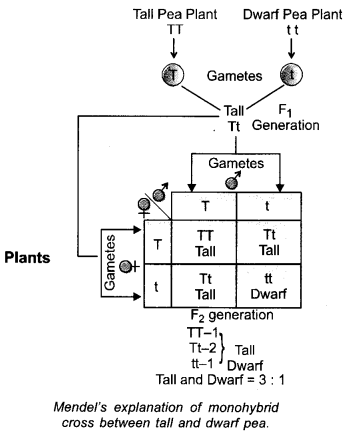
The trait of tallness which expresses itself in the presence of its contrasting form is called dominant. The other trait of dwarfness which is unable to express its effect in the presence of its contrasting trait is known as recessive.
Question 4.
How do Mendel’s experiments show that traits are inherited independently ? (CCE 2012, CBSE A.I. 2016, Delhi 17)
Answer:
Independent inheritance of traits is proved by employing dihybrid crosses and obtaining dihybrid ratios. Mendel crossed pure breeding tall plants having round seeds (TTRR) with pure breeding short plants having wrinkled seeds (ttrr). The plants of F1 generation were all tall and with rounded seeds (TtRr) indicating that the characteristics of tallness and round seededness were dominant. Self breeding of F1 yielded plants in the ratio of 9 tall round seeded, 3 tall wrinkled seeded, 3 short round seeded and one short wrinkled seeded. Tall wrinkled seeded and short round seeded plants are new combinations which can develop only if the traits are inherited independently. If the two traits are considered individually, F2 ratio would be same as for monohybrid crosses, i.e., 12 tall : 4 short, 12 round seeded : 4 wripkled seeded.

TR, Tr, rR, tr x TR, Tr, rR, tr Gametes 9 tall rounded : 3 tall wrinkled : 3 short rounded : 1 short wrinkled
Question 5.
A man with blood group A marries a woman with blood group O and their daughter has blood group O. Is this information enough to tell you which of the traits—blood group A or O, is dominant ? Why or why not ?
Answer:
No. The information is not enough to tell whether the trait of the blood group A (IA) or blood group
0(I0) is dominant. Either can be possible. Each individual carries two alleles. A recessive trait appears only when the two alleles are similar.
Possibility I: Blood Group A is Dominant and O Recessive. The trait of blood group O can appear only when both the recessive alleles occur together as in mother and daughter (I0I0). A group father should carry both the alleles of A and O (IAI0).
Possibility 2: Blood Group O is Dominant and A Recessive. In this case the father should carry the alleles of A(IAIA) while the mother can be homozygous or heterozygous (I0I0, I0IA). The daughter will have one dominant alleles of 0(I0IA).
As both the possibilities can occur, the given information is unable to tell whether allele for blood group A or O is dominant.
Question 6.
How is the sex of the child determined in human beings ? (CCE 2013)
Answer:
Sex of the child is determined by the gametes that fuse to form zygote which later grows into offspring. Human females (44 + XX) produce only one type of ova (22 + X). Human males (44 + XY) form two types of sperms, androsperms (22 + Y) and gynosperms (22 + X). Both are formed in equal number. It is a chance factor whether an androsperm or a gynosperm fuses with egg to form 44 + XY or 44 + XX child. A child that obtains an X-chromosome from father will be girl and the one who inherits a Y-chromosome will be boy.
Question 7.
Draw Fig. 4.12. What are the different ways in which individuals with a particular trait may increase in a population ?
Answer:
There are three different ways in which individuals with a particular trait can increase in a population.
- Survival Value (Natural Selection): The trait has survival value. It is picked up by natural selection. Through differential reproduction, it increases in population, e.g., green colour in beetles instead of red providing camouflage in bushes against being picked up by crows.
- Genetic Drift: There is seasonal or accidental decline in population. The survivors have certain combination of traits which increase in number with the increase in population. The traits may not give any extra benefit to population.
- Food: Individuals with particular trait may have extra abundance of food in their environment. They will naturally increase in number.
Question 8.
Why are traits acquired during the life time of an individual not inherited ?
(CCE 2011, 2012, 2013, CBSE A.I. 2017)
Answer:
Acquired traits are structural, functional and behavioural changes that an individual develops during its life time due to a particular environment, disease, trauma, use and disuse, conditioning or learning. The traits are not passed on to DNA of germ cells. They remain restricted to somatic cells. They are destroyed with the death of the individual. Therefore, intelligence, experiences and structural changes acquired during life time of an individual cannot pass to the progeny. Weismann (1892) cut the tails of mice for 21 generations but a tail still developed in 22nd generation.
Question 9.
Why are the small number of surviving tigers a cause of worry from the point of view of genetics ?
Answer:
A small population is always at a risk of degeneration and extinction due to
- Excessive inbreeding that brings about inbreeding depression or degeneration,
- Fewer recombinations and variations which are otherwise essential for maintaining vitality and vigour of the species.
- Lesser adaptability to changes in the environment,
- Increased threat to survival due to poaching, habitat destruction and environmental change.
Question 10.
What factors could lead to the rise of a new species ? (CCE 2012, 2014, CBSE Foreign 2017)
Answer:
- Absence of gene flow amongst sub-populations due to the presence of physical barriers, long distance, differences in habitats, environmental and climatic conditions.
- Accumulation of different variations in the different sub-populations of the species.
- Natural selection of particular traits in a particular environment.
- Genetic Drift. Separation of a small population, changes in its allele frequency, new mutations and adaptations to new habitat.
- Reproductive Isolation. Accumulation of different variations and genetic drift result in absence of interbreeding in the previous subpopulations of a species. This results in the formation of new species. e.g., Finches of Galapogos islands.
Question 11.
Will geographical isolation be a major factor in the spéciation of a self pollinating plant species ? Why or why not ?
(CCE 2012)
Answer:
No. Geographical isolation has little role in spéciation of self pollinating plant species because there is already no gene flow among members of the species. Pea or Wheat which is self pollinated (due to pollination in bud condition) is not affected by any type of isolation. However, self pollinated plants can accumulate variations due to mutations and other factors and form new species.
Question 12.
Will geographical isolation be a major factor in the spéciation of an organism that reproduces asexually ? Why or why not ?
(CCE 2012)
Answer:
Recombination of genes is absent in asexually reproducing organisms. Therefore, variations originating in them do not get diluted but spread to all the» subsequent generations. Geographical isolation, which helps in spéciation due to formation of a separate gene pool, has no role in spéciation of asexually reproducing organisms.
Question 13.
Give an example of characteristics being used to determine how close two species are in evolutionary terms.
(CBSE Foreign 2017)
Answer:
- Closeness of species is determined by presence or absence of fundamental characteristics and correlated characters. Two species of bacteria are closely related as they possess fundamental similarities of occurrence of nucleoid (instead of nucleus), absence of membrane covered cell organelles and presence of 70 S ribosomes. Human beings are close to monkeys because they possess similar eukaryotic multicellular body with vertebrate characters, mammalian traits and primate characters.
- These days DNA matching is undertaken to find out the degree of closeness of the species.
Question 14.
Can the wing of a butterfly and the wing of a bat be considered homologous ? Why or why not ?
Answer:
No. Wings of butterfly and bat are fundamentally different in their origin and structure. In butterfly they are integumentary outgrowths having hollow tubes. In bat they are modified fore limbs which are covered by skin. Such organs which have a different origin and basic structure but are functionally similar are called analogous organs.
Question 15.
What are fossils ? What do they tell us about the process of evolution ? (CCE 2013, CBSE Foreign 2017)
Answer:
Fossils are remains or impressions of the past organisms that are found in the rocks of the old ages. They are often called written documents of evolution because they directly indicate the presence of different types of organisms in different ages. The path of evolution is known by arranging the fossils in a proper sequence age-wise. The early fossils are of simple organisms. Later on different complex forms arose, flourished and died down. They were replaced by newer forms. Study of fossils can also indicate the evolutionary stages of organisms. For example, modern horse (Equus) arose from a fossil animal Eohippus that existed on earth 60 million years back as a 30 cm high small animal. It evolved into 60 cm high goat sized Mesohippus about 40 million years back. Mesohippus gave rise to Merychippus (16-18 million years back) that formed Pliohippus (100-120 cm high, 10 million years ago). The modern horse evolved only 0-5 million years ago from Pliohippus.
Question 16.
Why are human being who look so different from each other in terms of size, colour and looks said to belong to same species ? (CBSE A.I. 2009 C, CBSE Foreign 2017)
Answer:
Delimitation of a species is based on the presence of a common gene pool, free inbreeding and reproductive isolation. Differences in size, colour and looks are based on preponderance of specific alleles and their interactions with the environment. All human beings, despite presence of different races, belong to same species {Homo sapiens) because they share the same gene pool, can marry amongst themselves and produce fertile offspring.
Question 17.
In evolutionary terms, can we say which among bacteria, spiders, fish and chimpanzee have a better body design ? Why or why not ?
Answer:
A better body design is the one which has more complexity, more elaboration and more controls which gives the organism a better competitive edge over others. There is no doubt that out of the four (bacteria, spiders, fish and chimpanzee), chimpanzee has a more elaborate body design or organisation. However, since body design is meant for competitive survival in their environment, all the four organisms or for that all living organisms, have a good body design that is suited to their environment.
NCERT Chapter End Exercises
Question 1.
A Mendelian experiment consisted of breeding tall Pea plants bearing violet flowers with short Pea plants bearing white flowers. The progeny all bore violet flowers but almost half of them were short. This suggests that genetic make up of the tall parent can be depicted as
(a) TTWW
(b) TTww
(c) TtWW
(d) TtWw.
Answer:
(c) TtWW.
Question 2.
An example of homologous organ is
(a) Our arm and a dog’s fore leg
(b) Our teeth and elephant tusks
(c) Potato and runners of grass
(d) All the above.
Answer:
(d) All the above.
Question 3.
In evolutionary terms we have more in common with
(a) A Chinese school boy
(b) A chimpanzee
(c) A spider
(d) A bacterium.
Answer:
(a) A Chinese school boy.
Question 4.
A study found that children with light coloured eyes are likely to have parents with light coloured eyes. On this basis can we say anything about whether the light eye colour is dominant or recessive ? Why or why not ?
Answer:
No. We cannot say with certainity whether the light eye colour is dominant or recessive. But since both the parents as well as the children have light eye colour, the probability is that it is a recessive trait. A recessive trait appears only when an individual possesses both the recessive alleles. As the parents are pure for the trait, the children also possess the trait and are pure for the same. Had the light eye colour been a domination trait, the recessive dark colour trait will have the chance to segregate and appear in some of the children.
Question 5.
How are the two areas of study, evolution and classification, interlinked ? (CBSE A.I. 2016)
Answer:
Classification is based on similarities and differences amongst organisms. The more characteristics two species have in common, the more closely related they are. They must have evolved from a common ancestor. Similarly more differences mean different adaptations and divergence from common ancestor in the remote past.
Question 6.
Explain the terms analogous and homologous organs with examples. (CBSE A.I. 2008 C)
Answer:
Analogous Organs: They are organs which have similar appearance and function but are quite different in their origin, development and anatomy.
Examples: Wings of Butterfly (integumentary outgrowths) and bird (modified fore-limbs).
Homologous Organs: They are organs which have similar origin, similar development and similar internal structure but have different forms and functions.
Examples: Fore-limbs of Horse, human hand, flipper of whale, wing of bird or bat.
Question 7.
Outline a project which aims to find the dominant coat colour in dogs.
Answer:
- Survey the dog population in and around your locality. Find out the percentage of different colours.
- Observe the lineages where same colour is present in both parents and offspring. There is possibility that in these lineages both the alleles of coat colour are similar.
- Allow crossing between two lineages having different coat colours.
- Find the colour of F1 individuals. It is probably the dominant coat colour.
- Cross the F1 dogs with the one having the other probably recessive colour. Is the ratio similar to test cross, Le., 1 : 1 ?
Question 8.
Explain the importance of fossils in deciding evolutionary relationships.
Answer:
Fossils are remains or impressions of past organisms that are found in the rocks. Fossils of lower strata belong to early periods while those of upper strata are of later periods. Arranging the fossils stratumwise will indicate the occurrence of different forms of life at different times. It is found that the early fossils generally belong to simple organisms. Complexity and elaboration increased gradually with evolution. Evolution has never been linear or straight. A number of variants or branches appeared, some of which were more complex while others were less complex.
- Fossils indicate the path of evolution of different groups.
- They can indicate the phylogeny of some organisms, e.g, Horse, Elephant.
- Some fossils have characteristics intermediate between two groups,
e.g., toothed bird Archaeopteryx. They indicate how one group has evolved from another.
Question 9.
What evidence do we have for the origin of life from inanimate matter ?
Answer:
Miller and Urey (1953) assembled an apparatus which had a spark chamber (for producing lightning), a flask for boiling and a condenser. They introduced a mixture of methane, ammonia, hydrogen and water into the apparatus. The gaseous mixture was exposed to electric discharges, boiling (800°C) and condensation with the temperature kept just below 100°C. The experiment was continued for a few days. At the end of one week, 15% of carbon (from methane) had been converted into simple organic compounds of amino acids, organic acids, sugars and nitrogen bases. It clearly proved that organic compounds or building blocks of life developed from inanimate matter in the remote past when the hot earth was cooling.
Question 10.
Explain how sexual reproduction gives rise to more viable variations than asexual reproduction. How does this affect the evolution of those organisms that reproduce sexually reproducing organism?
Answer:
Variations arising during sexual reproduction occur due to
- Chance separation of homologous chromosomes during gametogenesis.
- Crossing over between homologous chromosomes.
- Chance coming together of chromosomes during fertilisation,
- Errors or mutations occurring during DNA replication.
Only the last method of variations is found in asexually reproducing organisms. Therefore, rate of appearance of variations is quite high in sexually reproducing organisms as compared to asexually reproducing organisms. Further, variations developed in sexually reproducing organisms are quite viable as most of them are due to reshuffling of genes. It is not so in asexually reproducing organisms. Here, most of the changes are harmful. They have a negative impact on evolution except when changing environment finds them useful. Because of the abundance and viability of variations, the rate of evolution is also high in sexually reproducing organisms.
Question 11.
How is equal genetic contribution of male and female parents ensured in the progeny ?
Answer:
Most organisms are diploid. Their genetic material consists of two sets of chromosomes. Gametes carry single set of chromosomes, i.e., they are haploid. Sexual reproduction involves the formation and fusion of two types of gametes, male and female. Male gamete brings one set of chromosomes from the male parent. Female gamete also brings one set of chromosomes from the female parent. When two gametes fuse during sexual reproduction, the normal diploid chromosome complement is restored. It consists of 50% chromosomes from male parent and 50% chromosomes from female parent. Therefore, both the parents contribute equal genetic material to the offspring through formation and fusion of gametes.
Question 12.
Only variations that confer an advantage to an individual will survive in a population. Do you agree with this statement ? Why or why not ?
Answer:
No. Alongwith advantageous variations, a number of indifferent variations remain in the populations. Only the disadvantageous variations which are either lethal or extremely harmful are eliminated. All other variations persist in the population. Many of them function as preadaptations.
Selection Type Questions
Alternate Response Type Questions
(True/False (T/F), Right (√)/Wrong (x), Yes/No)
Question 1.
Mendel studied science and mathematics at the university of Amsterdam.
Question 2.
Both the parents contribute DNA equally to the offspring.
Question 3.
A factor which shows its effect in the hybrid is called recessive.
Question 4.
Sex of the child is determined by the type of ovum provided by the mother.
Question 5.
A recessive trait can also be common as blood group O.
Question 6.
Dromaesaurs were the first to fly.
Question 7.
Attached ear lobe is recessive trait.
Question 8.
Charles Darwin discovered the law of independent assortment,
Matching Type Questions
Question 9.
Match the articles given in columns A and B (single matching) :
Column A | Column B |
(a) Planaria (b) DNA (c) Miller and Urey (d) Darwin | (i) Molecular Biology (ii) 1953 (iii) Natural selection (iv) Rudimentary eyes |
Question 10.
Match the contents of columns I, II and III (double matching) :
Column I | Column II | Column III |
(a) Sex (b) Variations (c) Genetic drift (d) Trilobite | (i) Adaptive (ii) Male gamete (iii) Palaeozoic arthropod (iv) New Variations | p. New species q. Jointed appendages r. Conception s. Increase |
Question 11.
What type of similarity, homologous (H) and analogous (A) occurs in the pairs of organs ?
Pair of Organs | Similarity |
(i) Forlimb of Horse, Wing of Bird (ii) Wings of Bat and Butterfly (iii) Forelimbs of Bird and Bat (iv) Wings of Bird and Bat | |
Question 12.
Match stimulus with appropriate Response
Trait | Dominant A | Recessive B | Acquired C |
(i) Free ear Lobe (ii) Skin Tanning (iii) Wrinkled Seeds in Pea | | | |
Fill In the Blanks
Question 13.The term genetics was coined by ……………
Question 14.Mendel chose ………….. characters in Pea for his experiments.
Question 15. Broccoli has been developed from ……………… cabbage through artificial selection.
Question 16. ……………… Speciation occurs in geographically separated populations.
Question 17. Fossils are written documents of ………………..
Answers:

NCERT Solutions for Class 10 Science Chapter 9 – Heredity and Evolution
Hope given NCERT Solutions for Class 10 Science Chapter 9 are helpful to complete your science homework.
If you have any doubts, please comment below. Learn Insta try to provide online science tutoring for you.



